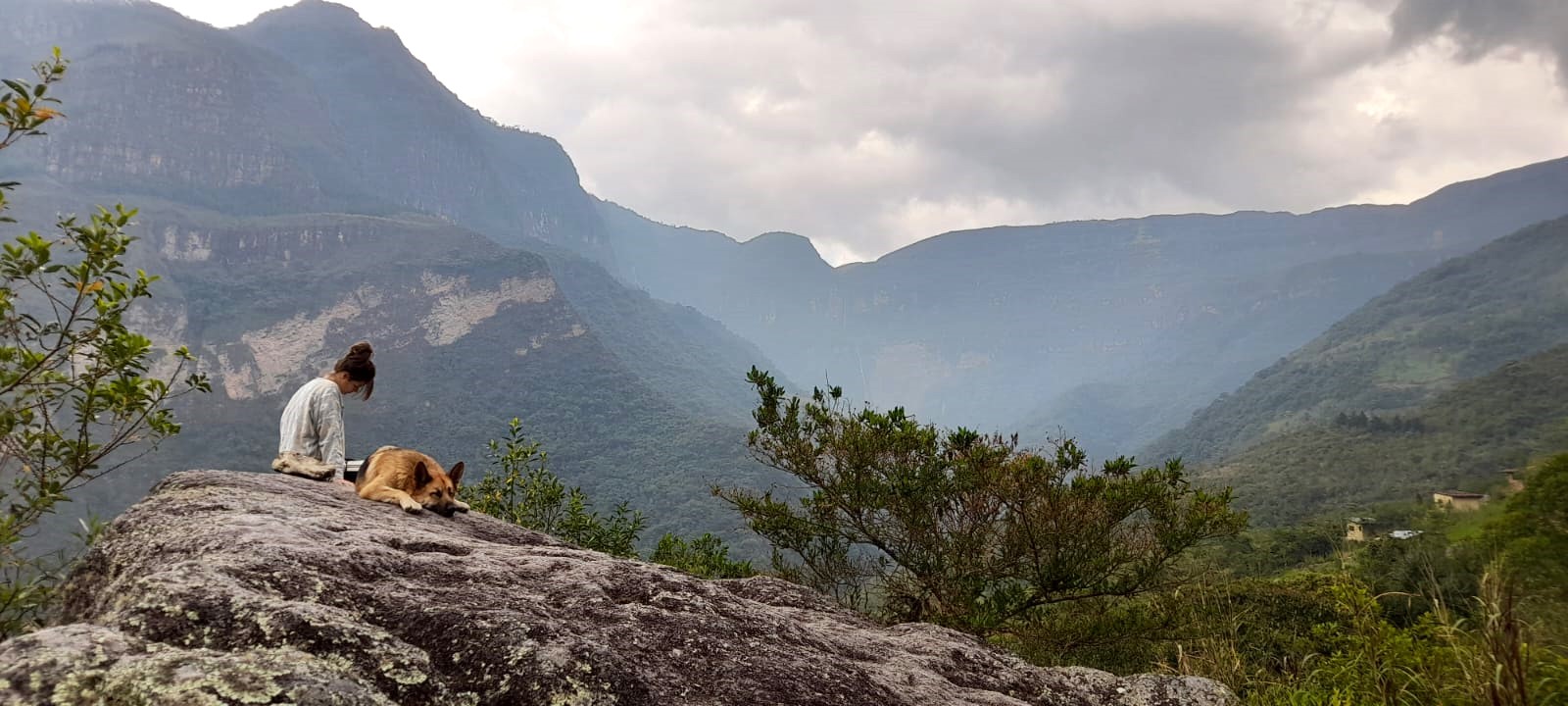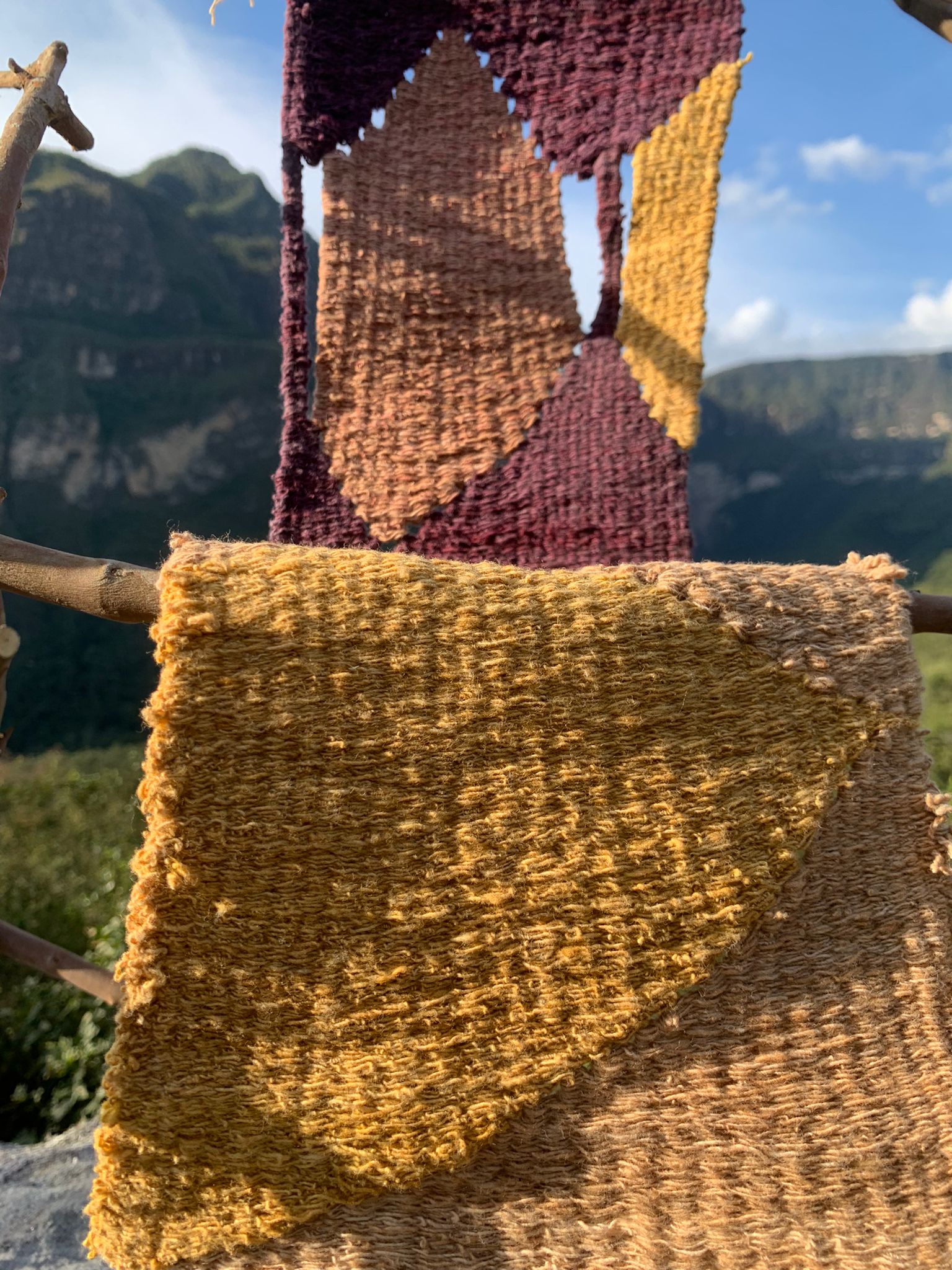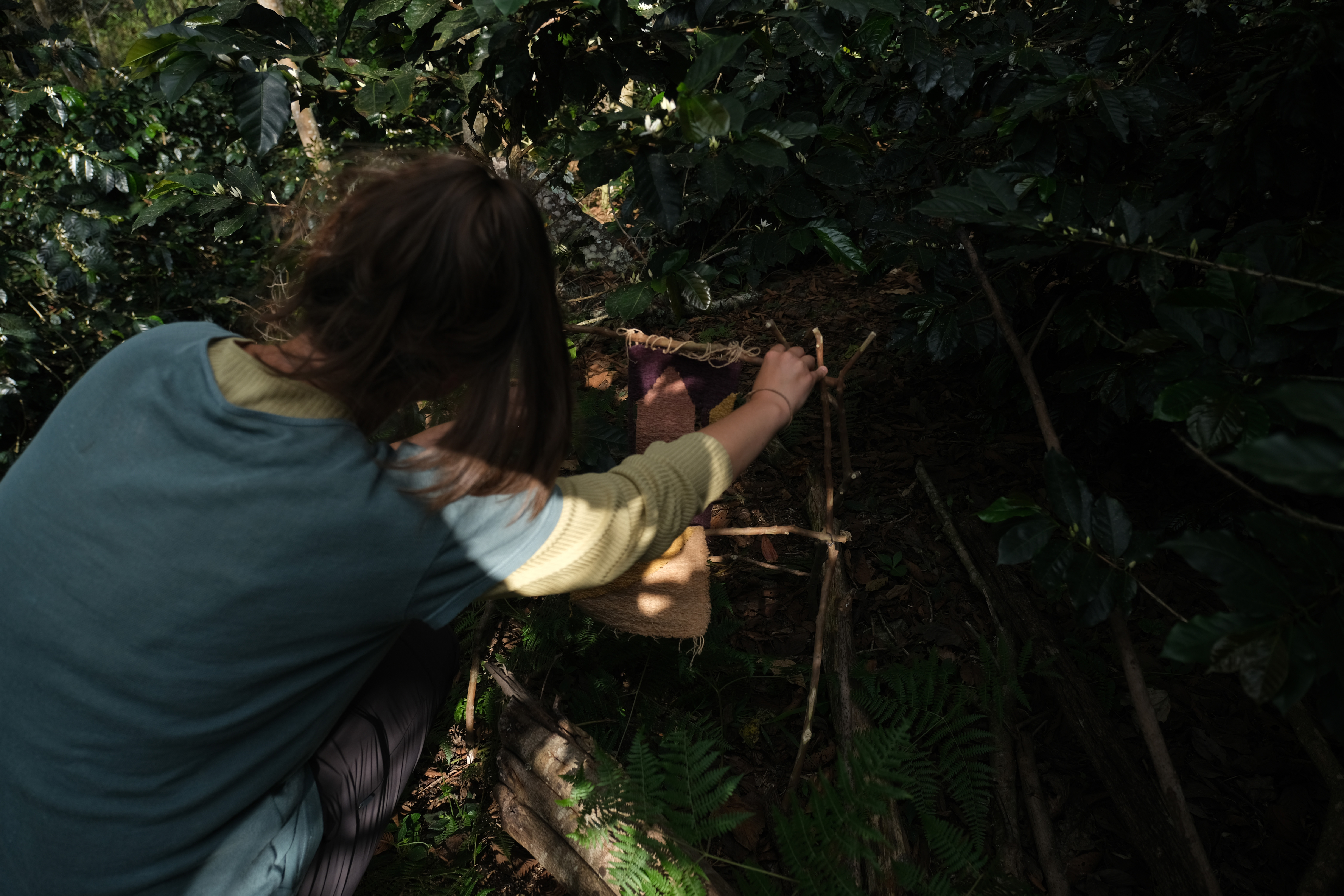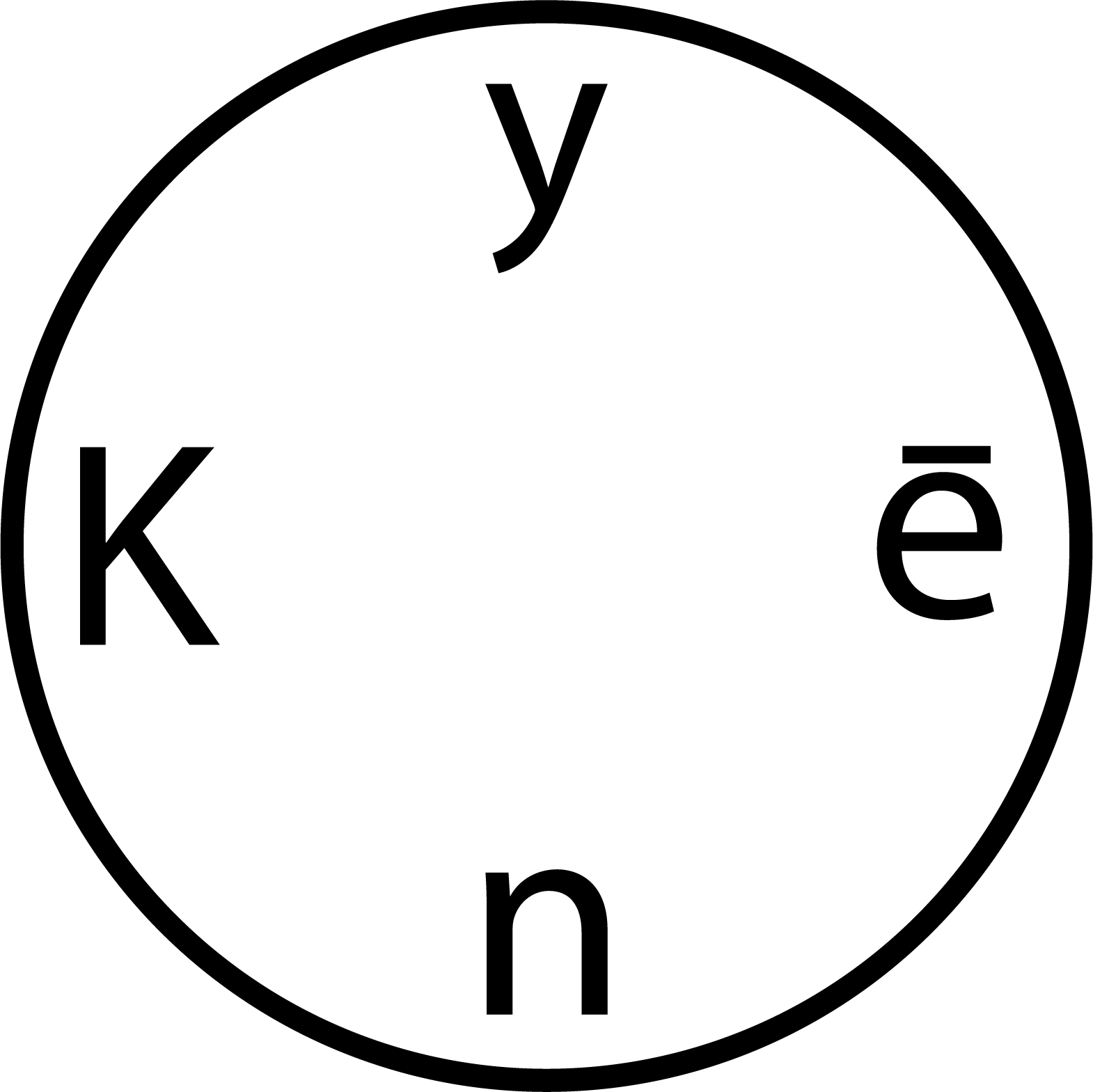Dunja Krcek
Dunja Krcek is a visual artist based in Vienna, Austria. She works with various media such as painting, drawing, textiles and installations. In her work she visually investigates the concepts of atmosphere, relational space, environment and felt sensation and uses the term collage as a connection for all methods of juxtaposition when uniting shapes and materials from different origins.

Wateralien installation: Vibration as an extension
The installation captures the omnipresent vibrations of the surroundings of GoctaLab from recordings made in the area at different times.
The work transforms the vibrations originated in the natural environment of the waterfall by different environmental, geological, human and animal factors into an analog electrical signal. This analog representation is subsequently digitized for storage, ensuring its preservation.
For the development of the work, this digital recording is reverted to its analog form, producing an auditory experience for the audience, converting otherwise intangible vibrations into an acoustic manifestation.
Although there is no scientific consensus, it is assumed that environmental vibrations, in their multiple forms, can influence the development and composition of living entities. However, the exact magnitude and nature of these effects depend on the type and duration of the vibration.
The work uses a raspberry pi to broadcast the sounds recorded around the waterfall as a frequency modulated radio antenna and a conventional radio for listening as part of the installation.
Through this, the Wateralien installation becomes not only a visual work, but an auditory experience; a tangible sonic exhibition of the unseen forces influencing GoctaLab. The technological process highlights the transformative journey of vibrations, similar to the metamorphosis of wild cotton that so influenced the artistic process.
For the development of the curatorial proposal and the technological solution of the work, she worked in collaboration with Renzo Signori responsible for the Koyne Program.
The installation is made solely using local materials, from the raw cotton and its dyes, ceramic made from clay from the area and wild bamboo.
Read more about the process with the material︎︎︎
The remoteness of the place and its location next to one of the longest waterfalls in the world have an inescapable presence and this really affected the artist's stay and work at the residency.






“I thought about the emotionality in landscapes and how to connect emotionally with a place. The waterfall gave the place its rhythm. When it rained, the waterfall transformed into this loud, place filling force of water. You could hear it from far away. It echoed in the valley. But on other days it was this very fine stream, almost like smoke, softly meeting the stones at the bottom of the fall. Like salt or sugar.
But it was always there and it was my first correspondence in the mornings. I started to observe how this landscape manifests itself in my own body. Many times I was just sitting there, being with
the landscape. It felt very hard in the beginning. Somehow I couldn’t find the relief I was hoping for. The expectation, that, away from urban life, you could just be and breathe. The presence of this place was charged with so many „things“. And I couldn’t find a way in. Within time I started to accept the circumstances. And the surroundings seemed even louder.
I imagined the landscape as sort of ‚extension‘ my bodily feelings are embedded in. Even though I traveled so far and fast - which made me feel to some degree being taken out of a context an put randomly into another one, I was already in relationship, in symbiosis with nature here. The air I was breathing, the fruits I was eating. But a notion of distance was accompanying my days. And the sentence – being at the edge of the natural / human world – came to my mind. What does it mean? Where is the human, where is the nature, what do these definitions even mean?
I feel a kind of resistance when it comes to the word nature, as it introduces a dualist approach to my thinking about existing in space. At the moment I am searching for ways in my artistic practice which gravitate towards investigating lived experience of interrelationships between the human and non-human. I want to open up intimate spaces of inbetween where impulses I get from my surroundings and I develop in some sort of language through material can meet with interactions from other living beings, with no intentionality coming from me.”
— Dunja Krcek


See the finished artworks at the Observatorium - exhibition in Helsinki︎︎︎
